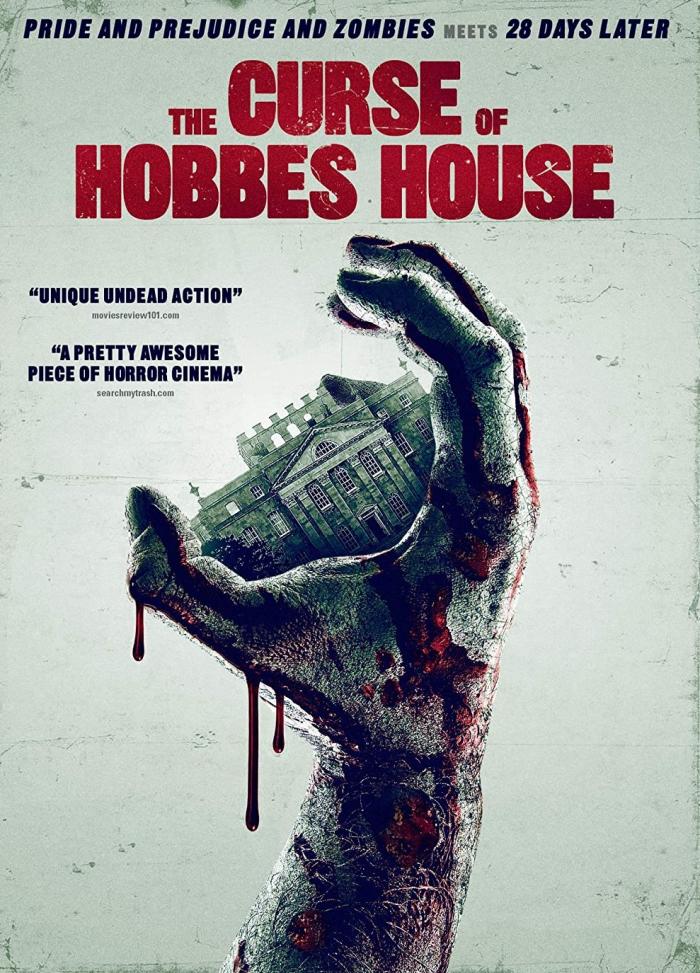Curse of Hobbes House Revels in Dramatic Tension
FTC Statement: Reviewers are frequently provided by the publisher/production company with a copy of the material being reviewed.The opinions published are solely those of the respective reviewers and may not reflect the opinions of CriticalBlast.com or its management.
As an Amazon Associate, we earn from qualifying purchases. (This is a legal requirement, as apparently some sites advertise for Amazon for free. Yes, that's sarcasm.)

Whether it’s severing limbs with a shovel or depicting shotgun blasts to the head, there’s something about an English accent that lends an air of sophistication to even the most intense displays of cinematic splatter. Indeed, that most revered of all British storytellers was renown for crafting gruesome set pieces, and like Shakespeare’s finest, 4Digital Media’s newest release, The Curse of Hobbes House, revels in the dramatic tension provided by supernatural underpinnings, treachery, murder and deliciously malicious mayhem.
Following an opening animated montage detailing the origin of the titular jinx inflicted upon the Dormant family during the middle ages, the film shifts focus to the modern-day UK with down-on-her-luck Jane (Mhairi Calvey), the latest of the Dormants, who’s just lost her job and has been reduced to living in her car, learning she’s a beneficiary after her aunt Alexa’s suicide. Traveling to the remote countryside manor for the reading of the will, Jane encounters her younger half-sister Jennifer (Makenna Guyler), a self-absorbed burgeoning internet starlet who’s arrived with arrogant, manipulative investment banker boyfriend Nigel (Kevin Leslie) in tow. Immediate sibling rivalry erupts but soon takes a back seat to survival when they learn from Alexa’s Syrian-refugee servant Naser (Waleed Elgadi) that the stories their aunt dutifully told of undead Guardians rising to protect Hobbes House during times of threat weren’t just curious familial lore. After they become surrounded by the risen corpses of their ancestors, the evening becomes a struggle for self-preservation where betrayals are revealed and copious blood is shed.
Similar to the film’s sisters, The Curse of Hobbes House is theatrical heir to a decomposing lineage that stretches back to Night of the Living Dead, and the plot itself owes as much of a purposely passing debt to the equally classic Evil Dead series as it does to Romero’s seminal canon. The Guardians themselves are the direct descendants of Sam Raimi’s fearsome Deadites, complete with luminous blue eyes and guttural demonic shrieks who can pass their possessed state to others in related fashion. When Jane discovers a shotgun in the manor’s basement and proceeds to wield the double-barreled boomstick with Ash Williams-level proficiency the homage becomes complete, yet while the pedigree is easily traced, the script by writers Wolf-Peter Arand and Juliane Black never descends into the mire of familiarity that decays most zombie fare. As director, Black places the quick-moving story with taut menace, taking every advantage of the urbane setting--Hobbes House manor is dripping with grand gothic malevolence, a stately stone medieval structure well furnished with portraits on every wall and surrounded by a barren, remote countryside as bleak as the overcast skies above it. Once the dead rise, the high-vaulted chambers and decorated passageways offer an unusually elegant backdrop to the unfolding on-screen carnage.
As the prologue narrator forewarns, “Only unity can keep you safe.” Throughout The Curse of Hobbes House runs a theme of hereditary bonds, whether it be between siblings or, more abstractly, the ramifications ancestry has on our lives. Jane and Jennifer are forced to settle their differences in order to confront the centuries-long evil that’s plagued their bloodline, and in the end learn they can accomplish more together than they ever could apart.
I give The Curse of Hobbes House a respectable 3.5 (out or 5) on my Fang Scale.


